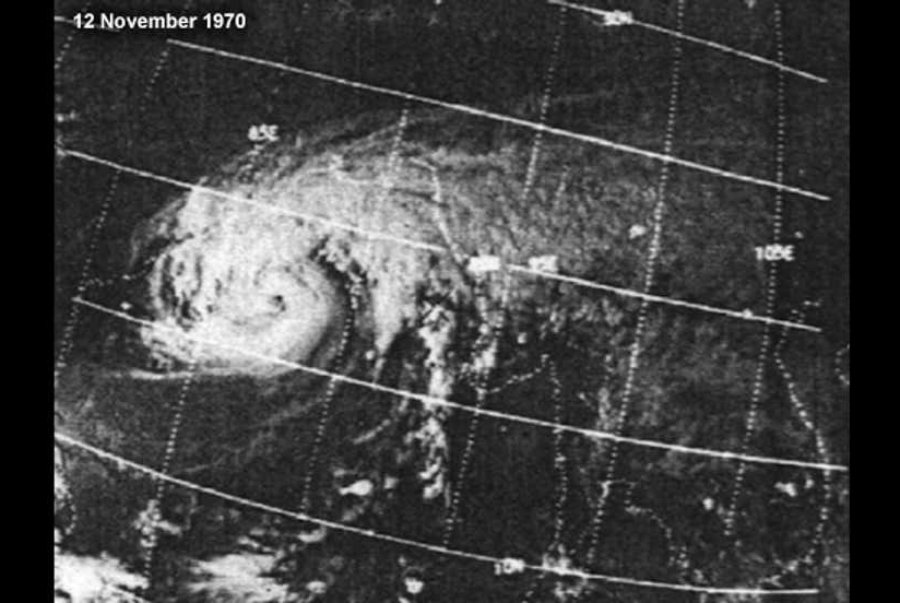
Published :
Updated :

The terrible claws that the cyclone Mocha spread on the south-eastern Bangladesh for a few breath-taking days have spared the land finally. All on a sudden it changed its course and made landfall on the neighbouring Myanmar. To the people living in the greater Cox's Bazar and the local administration, the cyclone's veering towards a different direction emerged as a close call. The panic-stricken people living in the coastal area heaved a sigh of relief.
Except a handful, few of the cyclones formed in the Bay of Bengal have spared Bangladesh in the past. The cyclones Gorki, Urir Char, Sidr, Aila, Amphan and a few others have left their trail of devastation in the areas of their assaults. But the name of the most calamitous of them may sound strange to people born after the 1970s. It came to be known as Bhola cyclone, as it directly hit the then subdivision in the southern Bangladesh, then East Pakistan. Bhola has long been a district. Many began calling the super-cyclone by its meteorological name Gorki immediately after it struck the southern part of the country. Those who were born later may have only sketchy ideas about the cyclone, dubbed the deadliest in the history of sea-borne storms that hit Bangladesh.
Although the weather forecast system was in effective use in the developed countries in 1970s, the then East Pakistan remained deprived of this facility. Later, the central government in West Pakistan was blamed for interfering with the timely forecast of the approaching Gorki. The devastation caused by the 1971 cyclone was the outcome of the discriminatory policy then pursued by the West Pakistani rulers bent on suppressing the East Pakistanis. It's worth remembering that 1970 was the year of the general elections in Pakistan. December 7 was declared the day of the vote. The cyclone struck East Pakistan on November 12.
The 1970 cyclone struck the Bangladesh southern coast catching the people in Bhola and the adjoining districts almost unawares. It resulted in the deaths of over 500,000 people; many of them were swept away into the sea by several feet high tidal surges. Being the inhabitants of a coastal district, the Bhola people are familiar with tropical storms and floods. The 1970 cyclone unfolded before them an hours-long terrible calamity. In one night, the life of people living in the sub-division had turned upside down. Unlike the cyclones of the later times, the post-Gorki days witnessed scores of bloated corpses floating on water, crows and vultures feasting on them. Bodies of humans and cattle were seen stuck in submerged trees and branches. The aftermath of Gorki was the spectacle of a seemingly endless trail of destruction. Apart from the swoop of death on humans and cattle, croplands on endless expanses were seen flattened, and destroyed. Those included vast fields of mature and ripe crops, mostly paddy.
To speak in a terse way, the Gorki cyclone wreaked havoc on the lives of content people living on a large island close to the sea. In just one night, their life was different. The storm with a speed of 222 kmph and the accompanying tidal surge tore family members from one another, many being separated never to be reunited. The Bhola residents had to cope with the cyclone's impact for long.
The Gorki or the Bhola cyclone made it clear that the Bengalees in East Pakistan and the West Pakistani military bureaucrats were not meant to live as a cohesive nation. With their lackadaisical attitude towards the post-cyclone relief and rehabilitation in Bhola, and their leaders' apathy towards cyclone victims, the east-west rift kept becoming visible. The role of Cyclone Gorki earned prominence in the later developments in the then East Pakistan after the 1970 election. Bangladesh ought to observe the Gorki Day on November 12 every year.


 For all latest news, follow The Financial Express Google News channel.
For all latest news, follow The Financial Express Google News channel.